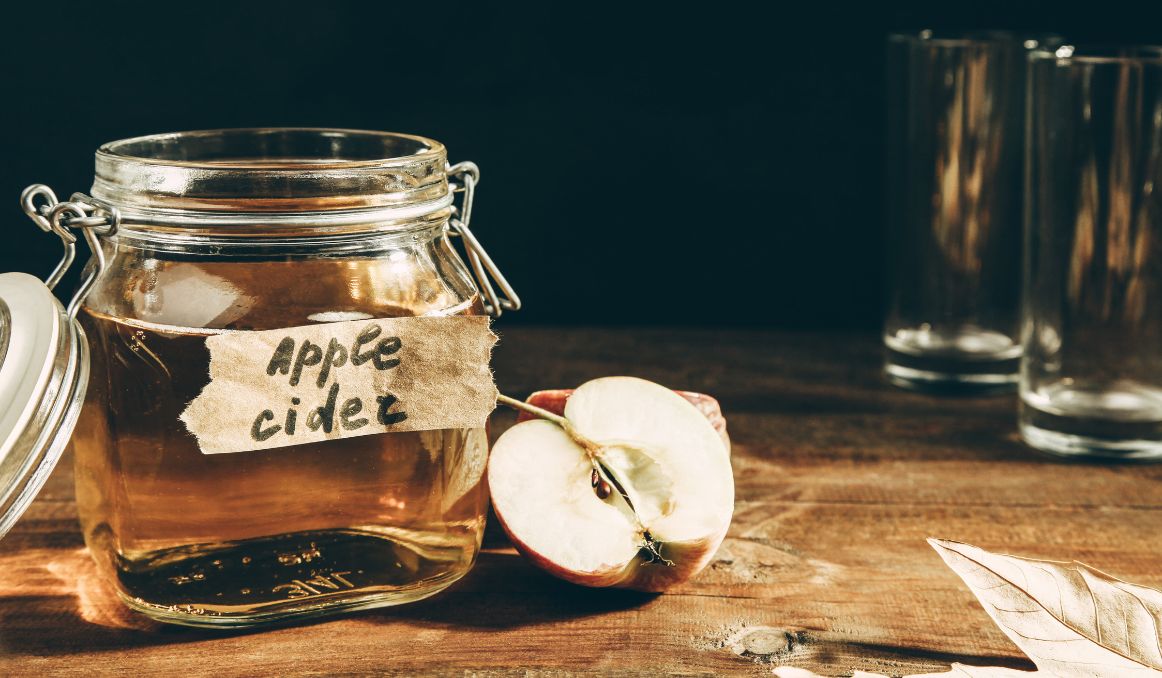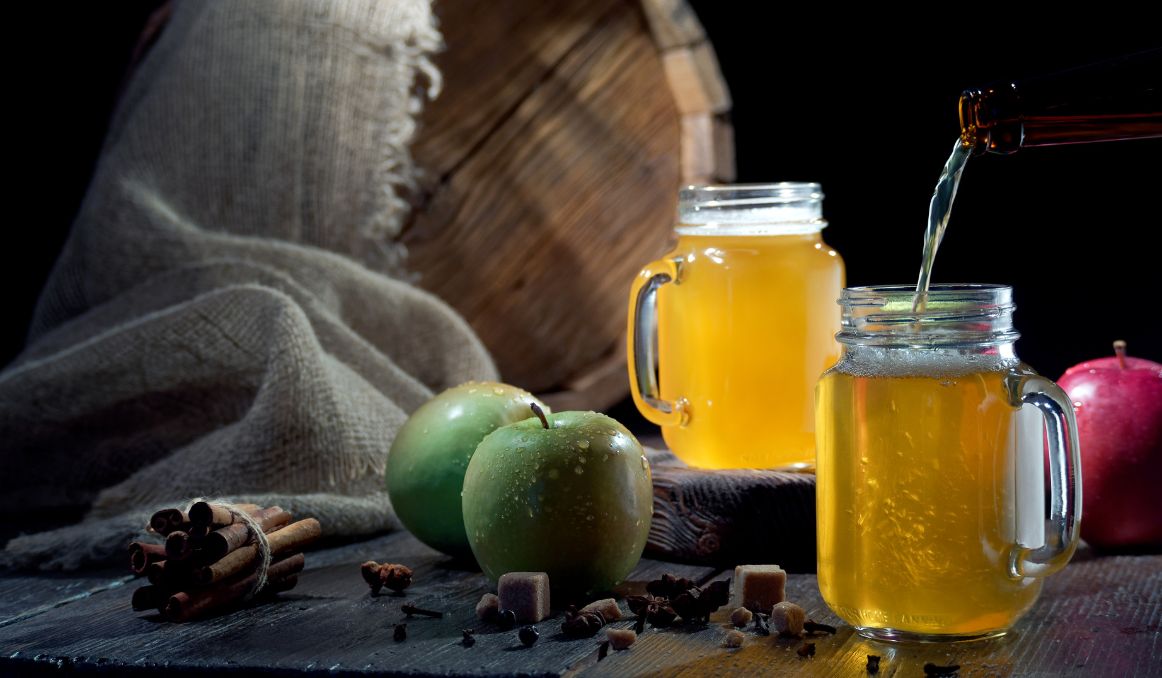How to Stop Yeast Fermentation in Cider
Few reasons exist to stop yeast fermentation in any beverage meant to ferment, but it is a commonly asked question. There are a number of ways to slow down and stop yeast fermentation in cider, and it really depends on the reason.
It’s important before you decide to force stop fermentation to understand the process.
Cider

Cider is a slightly fizzy, sweet fruit alcohol. It is typically made with apples, but it can also be made with pears and a variety of other fruits.
Unlike beer, which comes from grain, cider comes from fruit. In fruit, the sugars are naturally occurring and easy to access for the fermentation process, whereas with beer, the grain must be malted to convert the starches to sugars before they are fermented.
Fruit can be mashed and made into cider by pretty much anyone and pretty much anywhere.
Indeed, anthropologists have found that monkeys in the wild will pick fruit and let it sit and ferment naturally before eating it. They go on and have wild raging drunken weekends with the other monkeys after eating a bunch of fermented fruit.
So it’s not a huge leap to imagine that humans have been creating some version of cider for as long as we have been eating fruit from the vine.
Cider or Wine?
And speaking of the vine, what’s the difference between wine and cider then? Grapes are a fruit, but when we ferment them, we call it wine, not cider.
Why?
Well, the truth is, there is not much difference between wine and cider. You could say that all cider is wine, but not all wine is cider.
The primary difference between cider and wine, beyond the fact that one is made with apples or pears and the other is with grapes, is the length of time spent in fermentation.
Grapes spend much more time in fermentation, which is why the beverage comes out with much more alcohol and much drier than cider.
Fermentation
So let’s talk about fermentation.
When making cider, the process is simple.
Apples are cut up and boiled in filtered water (although not all cider producers pasteurize or boil the fruit), often with other ingredients like oranges (or other fruit) and sometimes cloves for added sweetness and spice.
The apples are then mashed into the water and then steeped further in the liquid to release all of the apple-y sweetness.
Once the liquid that is basically now apple juice has cooled, it’s time for fermentation.
This fermentation can happen two ways. You can either add commercially produced yeast or you can allow for wild yeast to enter into your liquid. However, if you did pasteurized your fruit, you probably did it to kill the wild yeast, so you’ll most likely go for your own yeast.
Yeast
Yeast has only one job, and it has had that same job since the beginning of time, which is about how long yeast has been around.
A single celled, eukaryotic, living organism, yeast is a type of fungus that is literally everywhere. There are hundreds of different strains of yeast; they are on our skin, in our bodies, in the air, and all over surfaces.
It seeks sugar in order to convert it to alcohol. One job. That’s it.
So, in the beginning, when humans first got into the wine and cider gig, and then into beer making, wild yeast was the status quo.
The brewer would make the liquid, be it apple juice, grape juice, or grain juice (wort), and then simply allow the liquid to sit out. It was not long before the liquid was fizzing and bubbling as the yeast discovered the sugary liquid.
When yeast gets into the liquid, it consumes it all and converts it to alcohol and carbon dioxide.
Once the yeast runs out of sugar to convert, it “flocculates,” lying dormant either at the top or the bottom of the fermentation tank, waiting to be skimmed off. That’s how you know fermentation is done.
In some cases, the alcohol reaches a high enough point that it kills off the yeast entirely, and fermentation stops.
Cider, Sugar, and Yeast

In the case of cider, it is the first situation that occurs. The yeast consumes the sugars from the apples or pears in the liquid and converts them to alcohol and then flocculates to the top of the airlock or fermentation tank to be sifted off.
It is an ideal time to end fermentation because you have alcohol, but you still have some residual sweetness.
Usually, the yeast is skimmed off at this point and the cider is bottled and chilled.
Sometimes, brewers will add a bit more sugar to the cider and allow the yeast to continue fermentation, creating a higher alcohol content.
For brewers who want a sweeter cider, lactose is the most typical addition to make because it is a non fermentable milk sugar. You can add the lactose after fermentation without worrying that the yeast will get right back to work.
How to Stop Fermentation in Cider
Now, why would you want to stop fermentation?
Sometimes, brewers want to stop fermentation in cider because they either want less alcohol in the final product or they want it naturally sweeter than normal. Or both.
In this case, you can stop fermentation in cider by shock cooling it, lowering the temperature quickly, which will force the yeast to go to sleep and stop fermenting.
Another way to stop fermentation in cider is to introduce potassium (make sure to do your homework on potassium metabisulfite vs potassium sorbate), which will not kill the yeast but it will inhibit fermentation.
In both cases, you can then skim the yeast off the top and bottle the cider.
In the end, you can experiment with different techniques, with adding sugar for more alcohol, adding lactose for more sweetness, and lowering the temperature or adding potassium to stop fermentation.
Remember to have fun with the process, trying your batch along the way.
Cheers!
Passionate about yeast fermentation and all the wonders it can do? So are we! If you’re interested in finding out how you can use our technology to control fermentation and monitor your yeast, save work hours and improve the cost-efficiency of your business, drop us a line at [email protected]
Also, check out these product pages, if you’re into beer or wine making:
- Oculyze BB 2.0 (Better Brewing) Yeast Cell Counter App + Hardware
- Oculyze FW (Fermentation Wine) Yeast Cell Counter App + Hardware
…or our custom solution page for other use cases (yours included):
Sources:


